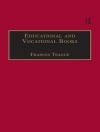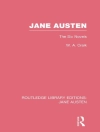In ‘Pagan Papers, ‘ Kenneth Grahame presents a collection of essays that weave a rich tapestry of nostalgia, nature, and the simplicity of pastoral life. Employing a lyrical style characteristic of his fairy tales, these writings delve into the interplay between the modern world and its lost pastoral dreams. Grahame’s pen captures the enchanting spirit of the English countryside, exploring themes of childhood, the allure of nature, and the spiritual essence of ancient traditions, all while employing a meticulous, almost poetry-like prose that invites readers into a reflective intimacy. Kenneth Grahame, best known for his timeless classic ‘The Wind in the Willows, ‘ infused his works with the colors of his own upbringing. Having spent his formative years along the River Thames, his affinity for nature profoundly influenced his literary voice. Grahame’s tenure at the Bank of England and his experiences of the changing Victorian landscape are often mirrored in his writings, showcasing a tension between industrial progress and a longing for a more harmonious existence. ‘Pagan Papers’ is a poignant invitation for readers to reconnect with the simplicities of life, offering a contemplative journey that resonates deeply in our fast-paced world. Ideal for lovers of nature writing, pastoral literature, and those yearning for a more reflective narrative, Grahame’s meditative essays will inspire a new appreciation for the elegance of the everyday.
Giới thiệu về tác giả
Kenneth Grahame (1859–1932), a literary figure of the late 19th and early 20th centuries, continues to enchant readers with his charming tales and prose. Scottish by birth, Grahame’s professional life commenced in the staid environment of the Bank of England, yet his true calling lay in the world of literature. His early works, including ‘Pagan Papers’ (1893), a collection of essays and musings, capture his gentle humor and keen observations on the idiosyncrasies of life. These writings reflect Grahame’s distinct literary style, marked by a nostalgic evocation of the pastoral English countryside and a yearning for the playful whimsy of childhood. ‘Pagan Papers’ also set the tone for his later, more renowned works such as ‘The Wind in the Willows’ (1908), a classic of children’s literature that weaves fantasy, adventure, and camaraderie with vivid characterizations, notably the irrepressible Mr. Toad. Grahame’s literary output, though modest in quantity, remains significant in quality and impact; his narratives, underpinned by a deep appreciation for the natural world and a subtle critique of modernity, have secured his legacy as a cherished author in the canon of English literature.












